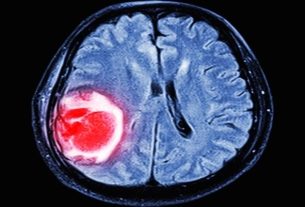Syphilis is a sexually transmitted infection (STI) caused by the bacteria Treponema pale resulting in initial symptoms such as painless sores on the penis, anus or vulva that disappear spontaneously and return after weeks, months or years in their secondary or tertiary forms, which are more serious.
This infection is transmitted through sexual intercourse without a condom with an infected person, whether vaginal, oral or anal, but it can also be transmitted by sharing contaminated needles or from mother to baby during pregnancy or birth.
Syphilis is curable and is treated by a gynecologist, urologist, infectious disease specialist or general practitioner through penicillin injections, guided by the doctor according to the stage of the disease. See how to treat and cure syphilis.

Symptoms of syphilis
Symptoms of syphilis vary according to the stage of infection, the main ones being:
1. Primary syphilis
The main symptoms of primary syphilis are:
- Hard and smooth lump that does not hurt or cause discomfort;
- Single or multiple wound that does not bleed;
- Painful or not painful bumps, close to the site of the lesions.
These primary lesions, called hard chancre, are the initial stage of the infection, appearing approximately 10 to 90 days after direct contact with another person’s syphilis sore, and disappear spontaneously within approximately 3 to 6 weeks, without leaving scars.
Syphilis sores generally appear in the genital region, such as the labia minora and the wall of the vagina in women, or around the foreskin of the penis in men.
Read too: 18 symptoms of syphilis in men (and what to do)
Furthermore, lesions can occur in other regions that have had contact with the bacteria, such as the anus, mouth, tongue, breasts or fingers. Know how to identify all the symptoms of primary syphilis.
2. Secondary syphilis
The main symptoms of secondary syphilis are:
- Smooth, soft and flat lesions on the skin, called flat condyloma;
- Red spots on the skin, mouth, nose, palms and soles;
- Peeling of the skin or alopecia;
- Bumps all over the body, but especially in the genital region;
- Headache, muscle, joint or sore throat;
- Low fever, usually below 38ºC;
- General malaise, lack of appetite and weight loss.
Symptoms of secondary syphilis appear about 2 to 8 weeks after the disappearance of primary syphilis lesions, affecting the skin and internal organs, as the bacteria have been able to multiply and spread to other parts of the body through the bloodstream. .
Secondary syphilis lesions are highly contagious and appear in outbreaks that regress spontaneously, that is, symptoms may appear periodically and disappear. See other symptoms of secondary syphilis.
Both secondary and primary syphilis, when untreated, can be followed by a symptomless phase, called latent syphilis, which can last a year or more and, despite there being no symptoms, the bacteria have been eliminated.
3. Tertiary syphilis
The main symptoms of tertiary syphilis are:
- Larger lesions on the skin, mouth and nose;
- Intense or constant headache;
- Muscle weakness;
- Changes in vision or pain in the eyes;
- Hearing loss, dizziness or vertigo;
- Mental confusion or memory problems.
The symptoms of tertiary syphilis can vary according to the affected organ, such as the heart, brain, nerves, bones, muscles, eyes, liver or blood vessels, for example. Check out all the symptoms of tertiary syphilis.
Tertiary syphilis can appear 10 to 30 years after the initial infection, especially when treatment is not carried out.
Learn more about the stages of syphilis in the following video:
4. Congenital syphilis
The main symptoms of congenital syphilis are:
- Rounded pale red or pink spots on the skin, including the palms of the hands and soles of the feet;
- Yellow skin and eyes;
- Easy irritability;
- Loss of appetite and energy to play;
- Bone and teeth problems;
- Hearing loss;
- Mental disability.
Congenital syphilis is syphilis in the newborn or baby that is transmitted by the pregnant woman to the baby through the placenta during pregnancy or at the time of birth, when the woman who has syphilis does not receive the correct treatment for the disease.
Syphilis during pregnancy can cause miscarriage, birth defects or death of the baby at birth. In living babies, symptoms can appear from the first few weeks of life to more than 2 years after birth. See more about congenital syphilis.
Online symptom test
To find out if you have syphilis, please select the symptoms you present:
This test is a tool that serves as a means of guidance only. Therefore, it is not intended to provide a diagnosis and does not replace consultation with a urologist, gynecologist or infectious disease specialist.
How the diagnosis is made
Syphilis is diagnosed by a gynecologist, urologist, infectious disease specialist or general practitioner through assessment of symptoms, health and sexual history, and physical examination of the lesions.
If you want to make an appointment, you can find the doctor closest to you using the tool below:
Taking care of your health has never been easier!
Tests for syphilis
The diagnosis of syphilis can be confirmed through tests, such as:
- Rapid syphilis test;
- Non-treponemal tests, such as VDRL, which detect antibodies against the bacteria;
- Treponemal serology, such as FTA-ABS or TPHA.
Furthermore, depending on the symptoms presented, the doctor may order other tests such as a lumbar puncture, to check for the presence of bacteria in the central nervous system, or a chest X-ray or computed tomography to assess whether there is an aneurysm in the aorta, for example.
In all cases, the doctor may also order tests to detect other sexually transmitted infections (STIs), mainly HIV. Check out all STI exams.
Ways of transmitting syphilis
Syphilis is a sexually transmitted infection and, therefore, can be transmitted through unprotected vaginal, anal or oral sexual intercourse, that is, without a condom, when coming into contact with secretion from lesions present in the genital and/or anal region. .
Furthermore, syphilis can be transmitted by sharing needles, as the bacteria in the secondary phase of the disease are circulating in the blood and can be transmitted from one person to another through this route.
Another form of transmission is from mother to child during pregnancy or at the time of birth, which is possible when a woman does not receive adequate treatment. Understand better how syphilis is transmitted.
Types of syphilis
In addition to being classified according to the stage of infection, syphilis can also be classified according to the affected body location, the main ones being:
1. Genital syphilis
Genital syphilis is characterized by the appearance of syphilis sores in the genital region, such as the vulva, labia minora, vagina or cervix in women, or around the foreskin of the penis in men.
When it affects the female genital region, it is known as vaginal syphilis or syphilis in the vagina, and when it affects the male genital region, it is called penile syphilis or syphilis in the penis.
This type of syphilis can also affect the anal region.
2. Syphilis in the mouth
Syphilis in the mouth happens when syphilis sores appear in the mouth, tongue or throat, caused by unprotected oral sex.
3. Syphilis in the skin
Syphilis on the skin is characterized by the presence of syphilis sores on the skin, which can affect the skin of the genital region or any other part of the body, as in the case of tertiary syphilis.
4. Syphilis during pregnancy
Syphilis during pregnancy, also called syphilis in pregnancy, occurs when a pregnant woman has an infection with the bacteria, which can be transmitted to the baby through the placenta and affect its development, which can cause malformations in the nose, teeth, jaw, roof of the mouth, in addition to of deafness, blindness or meningitis, for example.
Furthermore, syphilis in pregnancy can cause other complications such as miscarriage, low birth weight or death of the baby after birth.
This type of syphilis can be detected by the obstetrician during prenatal examinations. See the main prenatal exams.
5. Ocular syphilis
Ocular syphilis occurs in cases of tertiary syphilis, when the bacteria reaches the eyes.
Symptoms of ocular syphilis are redness or pain in the eyes, floaters, blurred vision, increased sensitivity to light or even blindness.
6. Neurosyphilis
Neurosyphilis is also a type of tertiary syphilis, which occurs when the bacteria reaches the central nervous system, affecting the brain, meninges or spinal cord.
This type of syphilis can cause symptoms such as severe headache, muscle weakness, paralysis, difficulty concentrating or dementia. Know how to identify the symptoms of neurosyphilis.
7. Cardiovascular syphilis
Cardiovascular syphilis is another type of tertiary syphilis when the bacteria affects the heart and/or blood vessels, causing aortic aneurysm or problems with the aortic valves.
8. Otosyphilis
Otosyphilis is a rarer type of tertiary syphilis and occurs when the bacteria affects the auditory and vestibular system, causing symptoms such as dizziness, vertigo, ringing in the ears, hearing loss or balance problems.
9. Gomatose syphilis
Gummatous syphilis is also a type of tertiary syphilis that appears when the bacteria infiltrates any organ, mainly skin or bones, causing their destruction.
Treatment for syphilis
Treatment for syphilis must be carried out according to the doctor’s instructions, and it is important to follow the instructions even if there are no visible symptoms to ensure the elimination of the bacteria.
For this, the doctor usually recommends injections of penicillin-benzatine, also called benzetacil, or alternatively other antibiotics, such as doxycycline or ceftriaxone.
Read too: Medicines indicated for the treatment of syphilis
Treatment time and number of injections may vary according to the stage of the infection and the symptoms presented. Check out more details on the treatment for syphilis.
Is syphilis curable?
Syphilis is curable and can be easily treated with penicillin injections, but treatment must be started as soon as possible to avoid serious complications in other organs such as the brain, heart and eyes, for example. Find out how to cure syphilis.

Sign up for our newsletter and stay up to date with exclusive news
that can transform your routine!
Warning: Undefined array key "title" in /home/storelat/public_html/wp-content/plugins/link-whisper-premium/templates/frontend/related-posts.php on line 12
Warning: Undefined array key "title_tag" in /home/storelat/public_html/wp-content/plugins/link-whisper-premium/templates/frontend/related-posts.php on line 13



